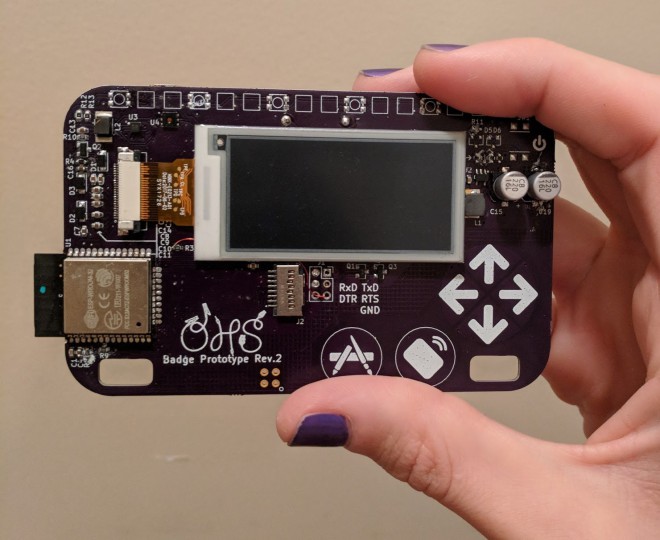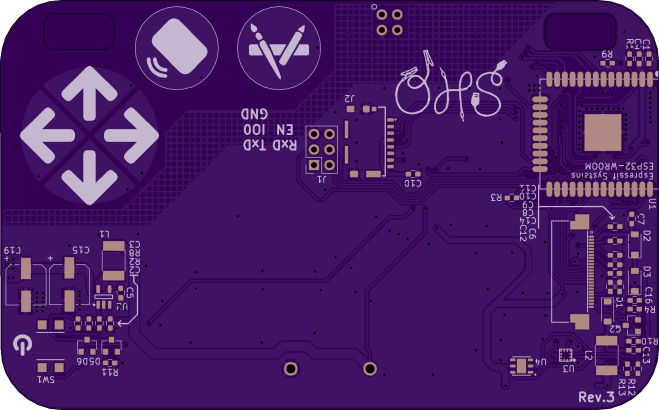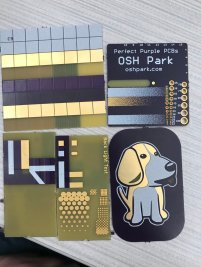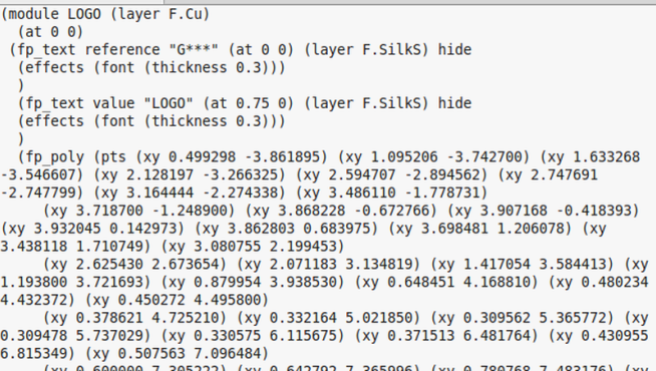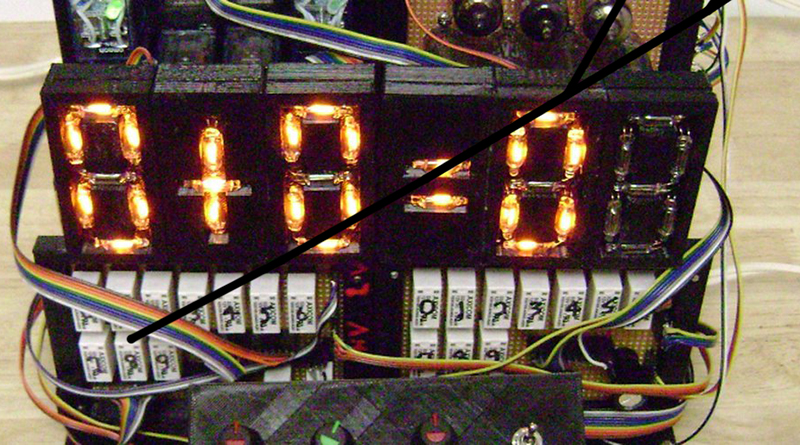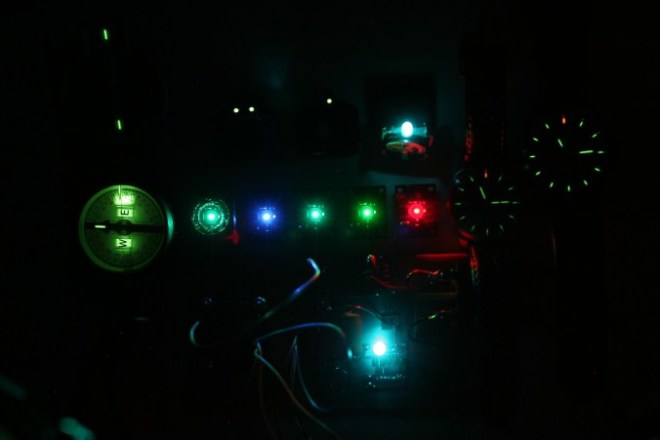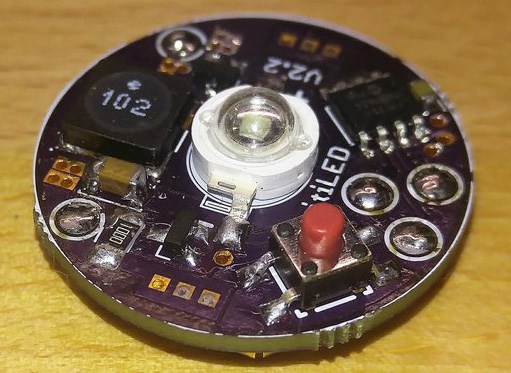OSH Park is producing electronic conference badges for the 2018 Open Hardware Summit. The hardware has been designed Alex Camilo, based on concepts from the ESP trINKet by Mike Rankin. The badge features an ESP32 microcontroller and a 2.13″ E-Paper display.
OSH Park shared project for the Rev 3 by Alex Camilo :
https://oshpark.com/shared_projects/8yeLK5gd
We expect this to be the final revision.
Timeline:
It is ordered on Super Swift today and should be validated next weekend. This will allow us to order the full quantity PCB panels in August 13th. Assembly is estimated to be 10 business days from the day when all components and PCBs are received.
Rev 2 photos:
And for those interested, here is a link to a gallery:
https://photos.app.goo.gl/UhCUX7eRN38tAhsF7
Terminal output on Rev 2 prototypes:
The Rev 2 prototypes have NodeMCU boards soldered on to the back to serve as a USB to serial adapter.
One of the Rev 2 prototype boards that Alex sent me has the default e-paper demo:

The other has MicroPython installed! 🙂
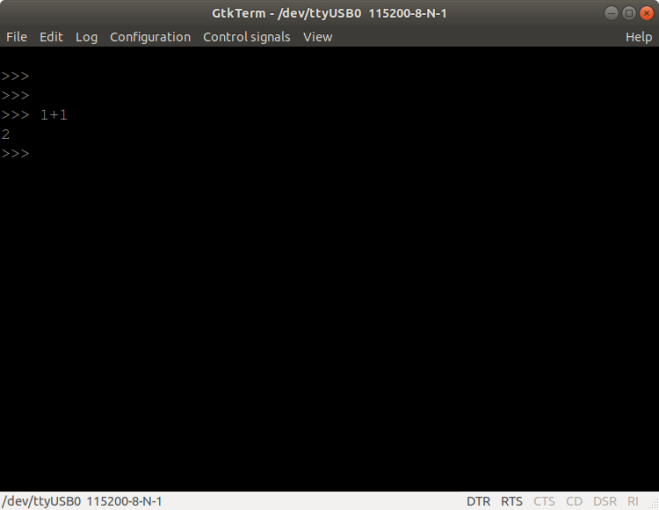
Resources for the 2018 Open Hardware Summit badge:

